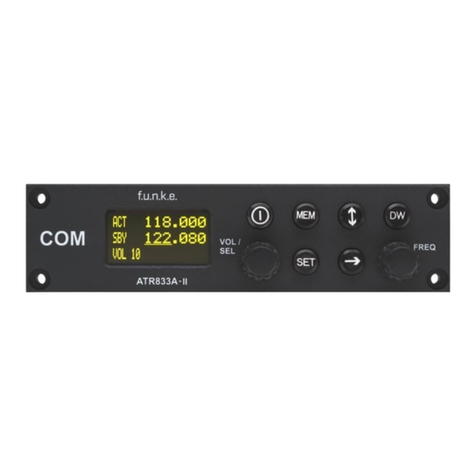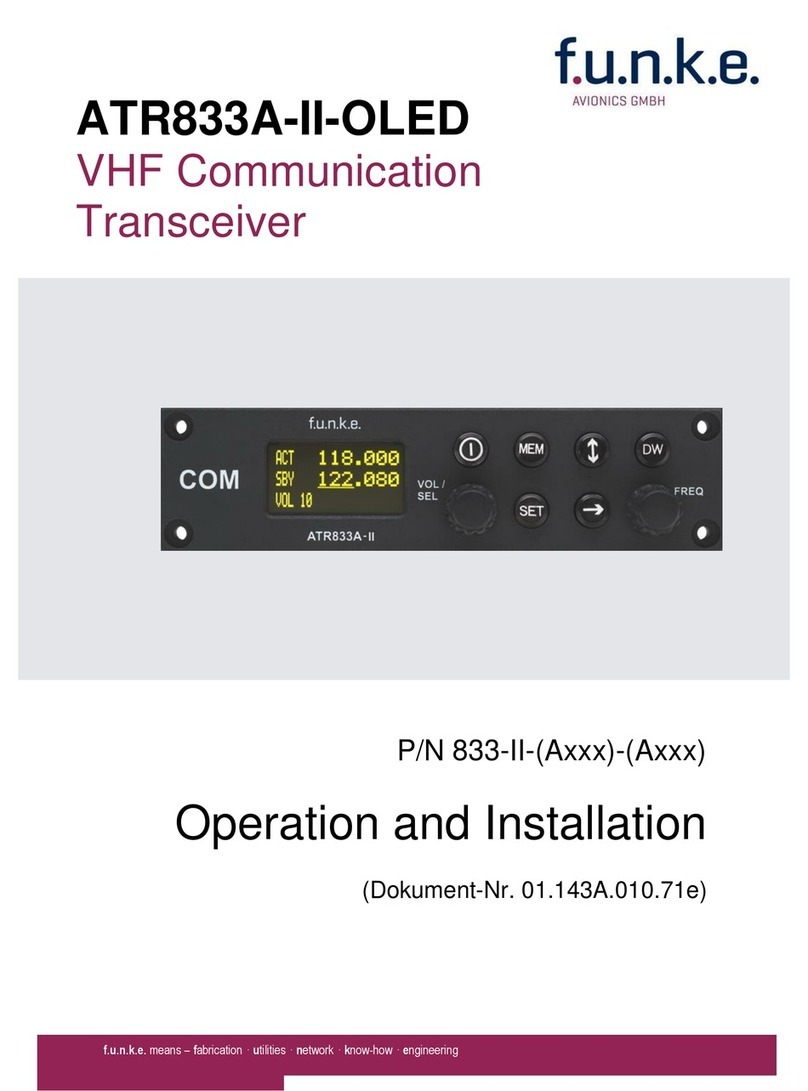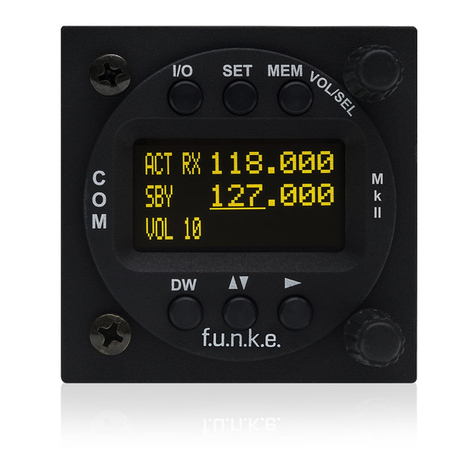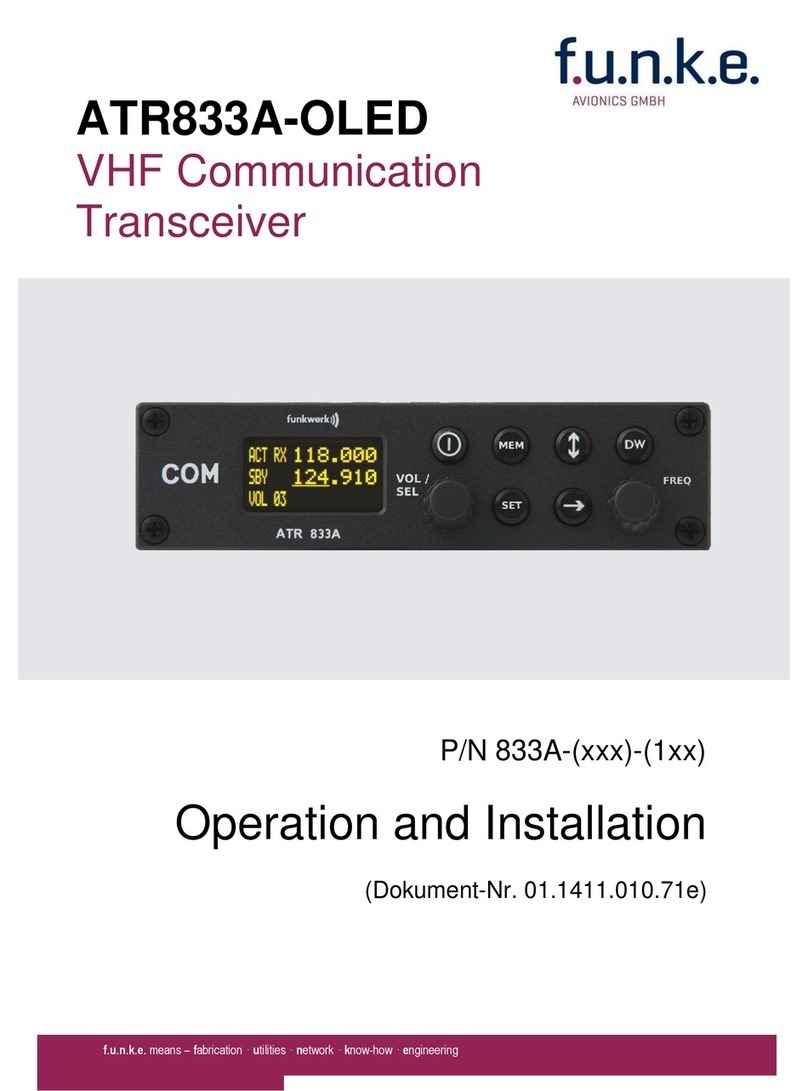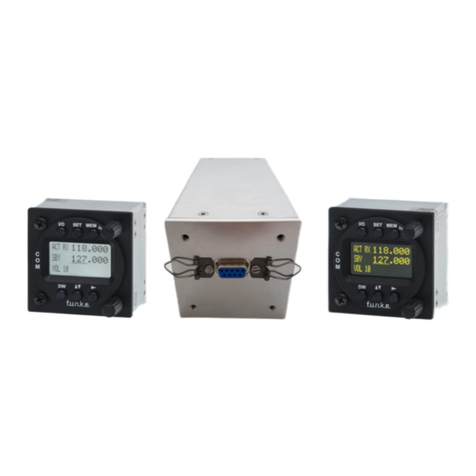
FSG 90 System
2 General Description
4 FAV_D10024 December 2014
2 General Description
2.1 Introduction
This installation and operating manual IM 031.00 contains instructions and descriptions
for application, installation, pre-setting operation and testing, as well as interconnecting
diagrams of the multi-use FSG 90 VHF/AM Transceiver System of f.u.n.k.e. AVIONICS
GmbH, 86807 Buchloe, Germany.
2.2 Models of the FSG 90 System
This manual refers to 2 out of 8 models available up to now.
A/N F10185, VHF/AM Dual Mode Airband Transceiver FSG 90
Frequency range: 118.000 to 136.975 MHz, channel spacing 8.33 kHz/25 kHz, results in
2,278 channels, and 118.000 to 136.975 MHz, channel spacing 25 kHz, results in 760
channels. Ninety-nine (99) channel memories for combined 8.33/25 kHz mode,
additional 99 memory channels for '25 kHz only' mode, 6 W RF carrier output power,
10 - 16.5 Vdc supply. The radio will fit a standard 58 mm dia. / 2¼" dia. instrument panel.
IDENT.: MODEL 90-25/8.33 (ED-23B CLASS C / CLASS E RECEIVER, CLASS 4 /
CLASS 6 TRANSMITTER).
A/N F10302, VHF/AM Dual Mode Airband Transceiver FSG 90-H1
Frequency range: 118.000 to 136.975 MHz, channel spacing 8.33 kHz/25 kHz, results in
2,278 channels, and 118.000 to 136.975 MHz, channel spacing 25 kHz, results in 760
channels. 99 channel memories for combined 8.33/25 kHz mode, additional 99 memory
channels for '25 kHz only' mode, 10 W RF carrier output power, 10 - 16.5 Vdc supply.
The radio will fit a standard 58 mm dia. / 2¼" dia. instrument panel.
IDENT.: MODEL 90-25/8.33-H1 (ED-23B CLASS C / CLASS E RECEIVER, CLASS 4 /
CLASS 6 TRANSMITTER).
2.3 Application
The equipment is well suited for operation in powered aircraft and helicopter with
reciprocating turboprop and turbojet engine.
Ultra low power consumption in conjunction with extremely wide DC supply voltage
range, small dimensions and wide scope of accessories allow universal airborne
applications in any powered aircraft, motor glider and Ultralight, and in glider and
balloon, for primary or (also battery supplied) backup operation.
Universal use also in ground vehicle, as well as for compact portable cases and for
desktop or rack mounted, local or remote controlled, fixed base primary, or (also battery
supplied) backup operations, are further applications. Please always ensure suitable
antenna solutions!
Retrofit installation is achieved against former panel mounted slide-in VHF COM
transceivers FSG 40A, FSG 40S, FSG 50, FSG 60M, and panel mounted FSG 70,
FSG 71M using adapters.






